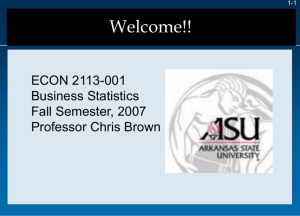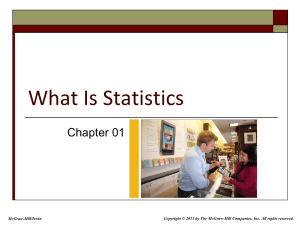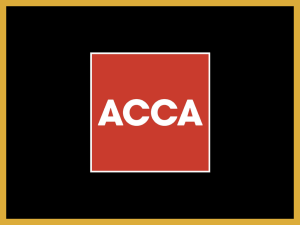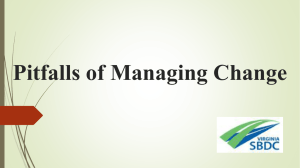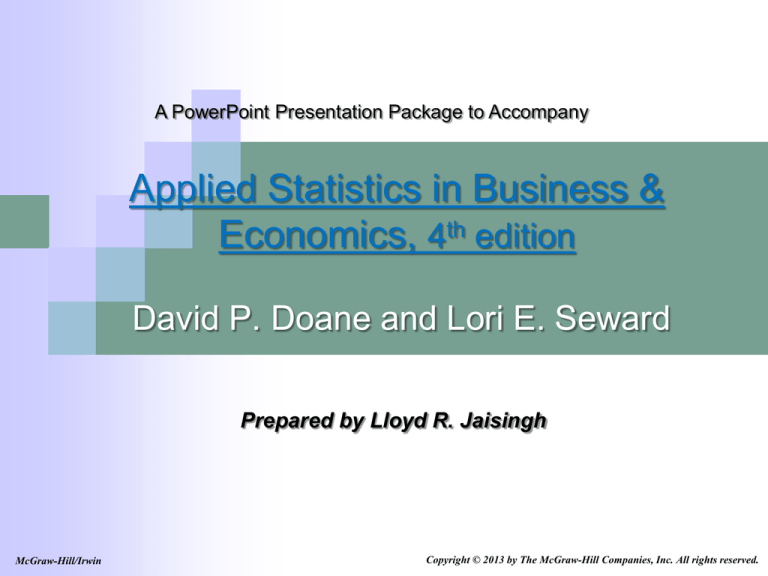
A PowerPoint Presentation Package to Accompany
Applied Statistics in Business &
Economics, 4th edition
David P. Doane and Lori E. Seward
Prepared by Lloyd R. Jaisingh
McGraw-Hill/Irwin
Copyright © 2013 by The McGraw-Hill Companies, Inc. All rights reserved.
Chapter 1
Overview of Statistics
Chapter Contents
1.1
1.2
1.3
1.4
1.5
What is Statistics?
Why Study Statistics?
Uses of Statistics
Statistical Challenges
Critical Thinking
1-2
Chapter 1
Overview of Statistics
Chapter Learning Objectives
LO1-1: Define statistics and explain some of its uses in
business.
LO1-2: List reasons for a business student to study statistics.
LO1-3: State the common challenges facing business
professionals using statistics.
LO1-4: List and explain common statistical pitfalls.
1-3
1.1 What is Statistics?
Chapter 1
LO1-1
LO1-1: Define statistics and explain some of
its uses in business.
• Statistics is the science of collecting, organizing, analyzing,
interpreting, and presenting data.
• A statistic is a single measure (number) used to summarize
a sample data set; for example, the average height of
students in a university.
1-4
1.1 What is Statistics?
Chapter 1
LO1-1
• For the height of students, a graduation gown manufacturer may need to
know the average height for the length of the gowns or an architect may
need to know the maximum height to design the height of the doorways
of the classrooms.
1-5
1.2 Why Study Statistics?
Chapter 1
LO1-2
LO1-2: List reasons for a business student to study statistics.
• Knowing statistics will make you a better consumer of other
people's data.
• You should know enough to handle everyday data
problems, to feel confident that others cannot deceive you
with spurious arguments, and to know when you've reached
the limits of your expertise.
1-6
1.2 Why Study Statistics?
Chapter 1
LO1-2
• Statistical knowledge gives a company a competitive
advantage against organizations that cannot understand
their internal or external market data.
• Mastery of basic statistics gives an individual manager a
competitive advantage as one works one’s way through the
promotion process, or when one moves to a new employer.
• Here are some reasons to study statistics.
1-7
1.2 Why Study Statistics?
Chapter 1
LO1-2
Communication
Understanding the language of statistics facilitates
communication and improves problem solving.
Computer Skills
The use of spreadsheets for data analysis and word processors or
presentation software for reports improves upon your existing skills.
1-8
1.2 Why Study Statistics?
Chapter 1
LO1-2
Information Management
Statistics helps summarize small and large amounts of data
and reveal underlying relationships.
Technical Literacy
Career opportunities are in growth industries propelled by
advanced technology. The use of statistical software increases
your technical literacy.
1-9
1.2 Why Study Statistics?
Chapter 1
LO1-2
Process Improvement
Statistics helps firms oversee their suppliers, monitor their
internal operations, and identify problems.
1-10
Chapter 1
1.3 Uses of Statistics
Two primary kinds of statistics:
Descriptive statistics – the collection, organization, presentation,
and summary of data.
Inferential statistics – generalizing from a sample to a
population, estimating unknown parameters, drawing
conclusions, making decisions.
1-11
1.3 Uses of Statistics
Chapter 1
LO1-1
1-12
1.3 Uses of Statistics
Chapter 1
LO1-1
Auditing
Sample from over 12,000 invoices to estimate the proportion of
incorrectly paid invoices.
Marketing
Identify likely repeat customers for Amazon.com and suggest comarketing opportunities based on a database of 5 million
Internet purchases.
1-13
1.3 Uses of Statistics
Chapter 1
LO1-1
Health Care
Evaluate 100 incoming patients using a 42-item physical and
mental assessment questionnaire.
Quality Improvement
Initiate a triple inspection program, setting penalties for workers
who produce poor-quality output.
1-14
1.3 Uses of Statistics
Chapter 1
LO1-1
Purchasing
Determine the defect rate of a shipment and whether that rate
has changed significantly over time.
Medicine
Determine whether a new drug is really better than the
placebo or if the difference is due to chance.
1-15
1.3 Uses of Statistics
Chapter 1
LO1-1
Operations Management
Manage inventory by forecasting consumer demand.
Product Warranty
Determine the average dollar cost of engine
warranty claims on a new hybrid engine.
1-16
1.4 Statistical Challenges
Chapter 1
LO1-3
LO1-3: State the common challenges facing
business professionals using statistics.
The Ideal Data Analyst
• Is technically current (e.g., software-wise).
• Communicates well.
• Is proactive.
1-17
1.4 Statistical Challenges
Chapter 1
LO1-3
The Ideal Data Analyst
• Has a broad outlook.
• Is flexible.
• Focuses on the main problem.
• Meets deadlines
1-18
1.4 Statistical Challenges
Chapter 1
LO1-3
The Ideal Data Analyst
• Knows his/her limitations and is willing to ask for help.
• Can deal with imperfect information.
• Has professional integrity.
1-19
1.4 Statistical Challenges
Chapter 1
LO1-3
Imperfect Data and Practical Constraints
State any assumptions and limitations and use generally
accepted statistical tests to detect unusual data points or to
deal with missing data. You will face constraints on the type
and quality of data you can collect.
1-20
1.4 Statistical Challenges
Chapter 1
LO1-3
Business Ethics
Some broad ethical responsibilities of business are
• Treating customers in a fair and honest manner.
• Complying with laws that prohibit discrimination.
• Ensuring that products and services meet safety regulations.
1-21
1.4 Statistical Challenges
Chapter 1
LO1-3
Business Ethics
Some broad ethical responsibilities of business are (continued)
• Standing behind warranties.
• Advertising in a factual and informative manner.
• Encouraging employees to ask questions and voice concerns
about the company’s business practices.
• Being responsible for accurately reporting information to
management.
1-22
1.4 Statistical Challenges
Chapter 1
LO1-3
Upholding Ethical Standards
Ethical standards for the data analyst:
• Know and follow accepted procedures.
• Maintain data integrity.
• Carry out accurate calculations.
1-23
1.4 Statistical Challenges
Chapter 1
LO1-3
Upholding Ethical Standards
Ethical standards for the data analyst (continued):
•
•
•
•
Report procedures faithfully.
Protect confidential information.
Cite sources.
Acknowledge sources of financial support.
1-24
1.4 Statistical Challenges
Chapter 1
LO1-3
Using Consultants
Hire consultants at the beginning of the project, when your team
lacks certain skills or when an unbiased or informed view is needed.
1-25
1.4 Statistical Challenges
Chapter 1
LO1-3
Communicating with Numbers
• Numbers have meaning only when communicated in the context of a
certain situation.
• Presentation should be such that managers will quickly understand
the information they need to use in order to make good decisions.
1-26
Chapter 1
LO1-3
1.4 Statistical Challenges
Skills Needed for Success in Business
For initial
job success
(Table 1.1)
For long-range
job success
Common
weaknesses
Report-writing
Managerial
accounting
Communication
skills
Accounting
principles
Managerial
economics
Writing skills
Mathematics
Managerial finance
Immaturity
Statistics
Oral
communication
Unrealistic
expectations
1-27
Chapter 1
1.5 Critical Thinking
• Statistics is an essential part of critical thinking because it
allows us to test an idea against empirical evidence.
• Empirical data represent data collected through observation
and experiments.
• Statistical tools are used to compare prior ideas with empirical
data, but pitfalls do occur.
1-28
1.5 Critical Thinking
Chapter 1
LO1-4
LO1-4: List and explain common statistical pitfalls.
Pitfall 1: Making Conclusions about a Large
Population from a Small Sample
Be careful about making generalizations from small samples
(e.g., a group of 10 patients who showed improvement).
1-29
1.5 Critical Thinking
Chapter 1
LO1-4
Pitfall 2: Making Conclusions from
Nonrandom Samples
Be careful about making generalizations from small samples and
from retrospective studies of special groups (e.g., studying heart
attack patients without defining matched control group).
1-30
1.5 Critical Thinking
Chapter 1
LO1-4
Pitfall 3: Conclusions From Rare Events
Be careful about drawing strong inferences from events that are
not surprising when looking at the entire population (e.g.,
winning the lottery).
Pitfall 4: Using Poor Survey Methods
Be careful about using poor sampling methods or vaguely
worded questions (e.g., anonymous survey or quiz).
1-31
1.5 Critical Thinking
Chapter 1
LO1-4
Pitfall 5: Assuming a Causal Link Based on
Observations
Be careful about drawing conclusions when no cause-and-effect
link exists (e.g., most shark attacks occur between 12 p.m. and 2
p.m.).
1-32
1.5 Critical Thinking
Chapter 1
LO1-4
Pitfall 6: Generalization to Individuals from
Observations about Groups
Avoid reading too much into statistical generalizations
(e.g., men are taller than women).
1-33
1.5 Critical Thinking
Chapter 1
LO1-4
Pitfall 7: Unconscious Bias
Be careful about unconsciously or subtly allowing bias to color
handling of data (e.g., heart disease in men vs. women).
Pitfall 8: Significance versus Importance
Statistically significant effects may lack practical importance
(e.g., Austrian military recruits born in the spring average 0.6 cm
taller than those born in the fall).
1-34


